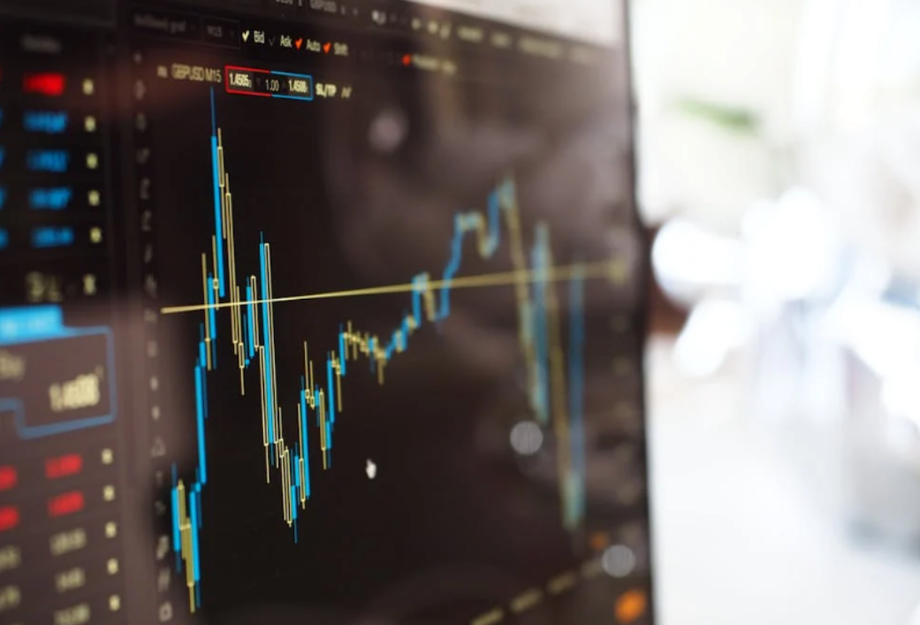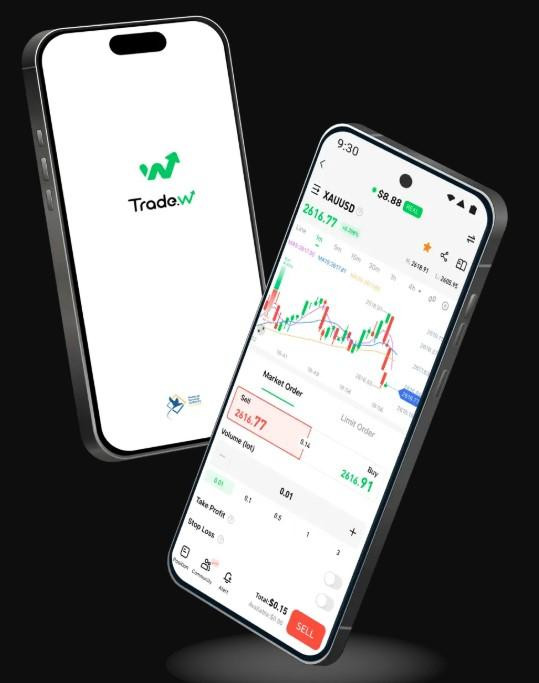Introduction: The Political Pulse of CFD Markets
Contract for Difference (CFD) trading is probably one of the most flexible forms of investment for speculating in financial markets without having to own the underlying assets. However, these flexible instruments are one of the most politically sensitive types of traded instruments. As political events, including elections, geopolitical conflict, and regulatory changes, evolve, they introduce immediate volatility to CFD markets that traders can take advantage of, though this also introduces risk.
Political events rapidly influence market sentiment, as they have the potential to change economic forecasts overnight. A political event, such as an election result or policy change, can change entire sectors, lead to changes in currency values, or trigger spikes in commodity prices.
This type of major event has to be addressed by CFD traders, especially traders who utilise leverage to magnify their potential returns; therefore, understanding the relationship between political events and the market is not just useful Ð it may be a matter of their viability as traders going forward.
This article will outline examples of how the various types of political events affect the numerous CFD instruments, examine historical situations that show the connections between political events and CFD instruments, and give practical advice on how traders can manage political risk trading.
Types of Political Events That Impact CFD Markets
1. Elections & Leadership Changes
Elections present a form of predictable uncertainty to financial markets. As new administrations often come with different fiscal and monetary agendas, it is not uncommon during the transition phase to see major price actions across various asset classes.
Pre-election phase: Markets are often subject to greater volatility as polls change and investors hedge for several different outcomes.
Election outcome: The immediate price action in the markets based on how business friendly the winner appears to be, or how close the outcome was.
Post-election policy development/implementation: Markets react in the medium to long term as campaign promises turn into policy development.

The 2020 US presidential election is a great illustration of this activity, as environments like renewable energy, healthcare and defence experienced meaningful CFD price action, all as a direct result of anticipated policy differences between candidates.
MUST READ: ETFs for Beginners: An Easy Way to Invest in Stocks
2. Geopolitical Conflicts & Tensions
Geopolitical crises and tensions may be even more pronounced than economic data in triggering volatility in the markets. These events are immediate uncertainties for the market regarding:
Supply chains and trade routes
Energy and commodity supplies
Global economic stability
Currency values and demand for safe havens
The conflict between Russia and Ukraine that escalated in 2022 clearly shows how geopolitical crises flow through and impact CFD market analysis.
Outside of the impact on people, there were major moves in energy prices, defence stocks, and major price volatility with the Russian ruble, with the cycle surrounding the conflict providing unique trading opportunities in CFD markets.
ALSO READ: A Comprehensive Guide to Getting Started in Stock Trading for Beginners
3. Regulatory or Legislative Changes
Government regulations and legislative actions can dramatically impact specific sectors and companies:
Antitrust regulations against technology corporations
Environmental regulations impacting an energy company
Financial regulations impacting banking companies
Tax reform impacting corporate profitability
Let's take the European Union's implementation of GDPR privacy regulations that increased compliance costs for tech stocks and created possible, significant penalties, which provided some big online trading opportunities in tech sector CFDs.
Asset-Specific Impacts of Political Events
Political developments affect different CFD asset classes in distinct ways:
Asset Class
Political Sensitivity
Examples
Forex CFDs
Extremely high - currencies directly reflect a nation's economic and political stability
Brexit caused GBP/USD to plummet over 10% overnight
Commodity CFDs
High for energy and precious metals - politically driven supply constraints
Oil prices surged 30% during initial Russia-Ukraine conflict
Index CFDs
Moderate to high - broad market sentiment shifts with political stability
FTSE 100 dropped 3.15% after Brexit referendum results
Stock CFDs
Variable - sector-specific impacts based on regulatory focus
Healthcare stocks during US healthcare reform debates
Forex CFDs: The Political Barometer
Currency CFD trading provides perhaps the most direct exposure to political developments. Central bank independence, decisions regarding fiscal policy, and geopolitical stability are all expressed in real-time currency valuations.
For instance, after the United Kingdom voted to leave the European Union in 2016, the British pound saw one of the largest single-day declines against the US dollar, creating fantastic profit opportunities for GBP/USD CFD traders who expected the result.
Currency pairs are also a way to detail geopolitical conflicts between countries. When trade tensions were peaking between the US and China in 2019, USD/CNH (US dollar vs China yuan) was up and down based on each tariff announcement or deal.
Commodity CFDs: Political Safe Havens / Supply Vulnerabilities
Commodity CFDs are often the front lines for political risk to take place, impacting markets, especially energy and precious metals:
Oil CFDs: Military conflicts in the Middle East or sanctions against major producers like Russia can lead to supply concerns and price spikes.
Gold CFDs - Investors often flock to gold when there is political uncertainty, as it is often a safe place to put money.

Additionally, Agricultural commodities suffer when trade disputes or sanctions are interrupting global supply chains.
For instance, when tensions escalated between the US and Iran in early 2020, oil prices surged over 4% in one day while gold prices reached multi-year highs, and subsequently created massive opportunities for commodity CFD traders who positioned themselves correctly before the news broke.]
Index CFDs: Broad Market Sentiment Shifts
Index CFDI instruments provide exposure to overall market sentiment, which can change radically during major political moments. The Brexit referendum caused significant volatility in FTSE 100 prices:
A steep decline immediately after the vote
Recovery, as investors viewed the international exposure of company constituents
Volatility throughout the negotiation periods
Major US indices, like the S&P 500 and Nasdaq, initiate volatility in around Federal Reserve policy announcements, which may, of course, be compounded by the political pressures and appointments that shape sales policies.
Stock CFDs: Sector-Specific Impacts
Individual stock CFDs see direct impacts based on specific political events:
Defence stocks can rally due to military conflicts
Healthcare stocks fluctuate based on discussions about regulatory reforms
Energy companies can be impacted by environmental policy changes
Technology companies can be impacted by antitrust investigations
During the government response to the COVID-19 pandemic in 2020, prices for pharmaceutical companies developing vaccines fluctuated tremendously with each announcement from the government regarding funding, approvals or purchase agreements, where there were made opportunities and risks were made available to stock CFD traders.
Historical Case Studies: Politics in Action
Brexit Referendum (2016)
The UK's decision to leave the EU generated a massive political market event:
GBP/USD collapsed over 10% overnight
FTSE 250 (more domestically focused than the FTSE 100- which was down as well) was down about 14% over two days
UK Bank stocks were down 15-20%
Gilt yields collapsed as investors sought safety
This political event created cascading effects across many CFD markets and highlighted the extent how which politically informed financial instruments have become.
Russia-Ukraine War (2022)
The Russian invasion of Ukraine caused immediate market reactions:
Brent crude oil jumped above $100/barrel
Gold prices reached multi-month highs
The Russian stock market fell over 30%
European natural gas prices increased by over 60%
Defence sector stocks surged with sales expectations
CFD traders, who were able to understand the potential market reactions to what quickly became geopolitical circumstances, had an amazing array of opportunities across the asset classes.
US-China Trade War (2018-2020)
The extended trade war between the two largest economies in the world created the volatility:
Technology stocks with exposure to Chinese supply chains moved dramatically
Agricultural commodities experienced price volatility from tariff impacts
The Chinese yuan depreciated against the dollar
Industrial metals saw volatility when concerns over manufacturing arose
Each tweet and/or comments from either government often lead to immediate market movements, which shows how volatile markets could be.
Strategies for Managing Political Risk in CFD Trading
Stay Informed Through Multiple Channels
The successful management of political risk begins with information:
Follow economic calendars that identify relevant political events that you need to plan for
Use specialist political media, not just the financial media
Watch polling data in advance of major elections
Set alerts for breaking geopolitical developments
Always remember that the markets often move in anticipation of political events (even after the anticipated result is priced in) instead of simply reacting to a political event. Positioning before major announcements has the potential to provide better entry points than chasing momentum after news.
Implement Rigorous Stop-Loss Discipline
Adjustments to trading through CFDs in times of political engagement require a considered approach:
Reduce overall position sizes before major political or governance decisions
Reduce leverage ratios during periods of political uncertainty
Consider smaller positions across multiple assets instead of larger positions in one asset class
Maintain higher cash reserves for opportunities after political events
CFDs have a leveraged nature which leads to magnified losses during political events, This makes conservatively sized positions, particularly vital amid political events.
Diversify Across Politically Uncorrelated Assets
To diversify successfully requires finding assets that respond differently to the same political triggers:
Diversify across different locations or geographies
Balance assets that are defensive and growth-related
Include a portion of traditional safe-haven assets
Utilise both long and short positions to hedge against political outcomes
CHECK OUT: Unlocking Zero Commission Trading: How Low Spreads Can Amplify Your Profits
Tools to Monitor Political Sentiment and Impact
Modern traders have rather advanced tools for CFD trading that allow them to navigate these political markets:
Real-time news aggregators to find market-moving political news
Sentiment analysis tools that gauge market reaction to political pronouncements
Volatility indicators that should indicate increasing uncertainty from political events
Economic calendars with political event watch

In addition, many CFD platforms provide many of these tools directly within their trading interface, providing traders immediate access and faster reaction time to breaking political news.
Conclusion: Turning Political Uncertainty into Strategy
Market volatility will always be a normal output from political eventsÑin a global system, we will expect this in our connected market. This is not entirely disadvantageous for CFD traders; it represents a challenge and an opportunity. Traders who develop a systematic process for monitoring, mapping and responding to political events and developments will have a fuzzy and significant edge in these markets.
As we also remember, often political volatility creates excess price moves in one direction, which corrects itself over time, representing contrarian opportunities. Successful CFD traders know markets consistently overreact to political headlines, which inevitably opens up entry opportunities for traders with a longer time horizon.
By integrating comprehensive and diligent research, a sound risk management strategy, a thoughtful position size and varied approach to diversification, political volatility can be turned from a threat into an opportunity when considering the dynamic market of CFD trading.
The relationship between politics and markets will never go away; it is likely to become even more intense together as our world becomes more connected. Traders who grow their understanding of the relationship, and strategies best suited to use the relationship, will position themselves to flourish in all market cycles and political opportunities.
Start trading CFDs with confidence during political events. Our advanced platform provides real-time news alerts, risk management tools, and expert market analysis to help you capitalise on political market movements.
Open a Live Account | Try Our Risk-Free Demo
Trading CFDs involves significant risk of loss and may not be suitable for all investors. 76% of retail investor accounts lose money when trading CFDs with this provider.






